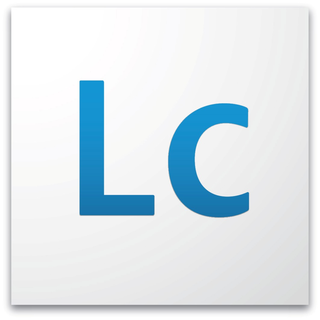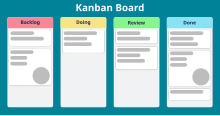Project management is the process of leading the work of a team to achieve all project goals within the given constraints. This information is usually described in project documentation, created at the beginning of the development process. The primary constraints are scope, time, and budget. The secondary challenge is to optimize the allocation of necessary inputs and apply them to meet pre-defined objectives.
The rational unified process (RUP) is an iterative software development process framework created by the Rational Software Corporation, a division of IBM since 2003. RUP is not a single concrete prescriptive process, but rather an adaptable process framework, intended to be tailored by the development organizations and software project teams that will select the elements of the process that are appropriate for their needs. RUP is a specific implementation of the Unified Process.

In systems engineering and software engineering, requirements analysis focuses on the tasks that determine the needs or conditions to meet the new or altered product or project, taking account of the possibly conflicting requirements of the various stakeholders, analyzing, documenting, validating, and managing software or system requirements.

A laboratory information management system (LIMS), sometimes referred to as a laboratory information system (LIS) or laboratory management system (LMS), is a software-based solution with features that support a modern laboratory's operations. Key features include—but are not limited to—workflow and data tracking support, flexible architecture, and data exchange interfaces, which fully "support its use in regulated environments". The features and uses of a LIMS have evolved over the years from simple sample tracking to an enterprise resource planning tool that manages multiple aspects of laboratory informatics.

In industry, product lifecycle management (PLM) is the process of managing the entire lifecycle of a product from its inception through the engineering, design and manufacture, as well as the service and disposal of manufactured products. PLM integrates people, data, processes, and business systems and provides a product information backbone for companies and their extended enterprises.
A translation management system (TMS), formerly globalization management system (GMS), is a type of software for automating many parts of the human language translation process and maximizing translator efficiency. The idea of a translation management system is to automate all repeatable and non-essential work that can be done by software/systems and leaving only the creative work of translation and review to be done by human beings. A translation management system generally includes at least two types of technology: process management technology to automate the flow of work, and linguistic technology to aid the translator.
A collaboratory, as defined by William Wulf in 1989, is a “center without walls, in which the nation’s researchers can perform their research without regard to physical location, interacting with colleagues, accessing instrumentation, sharing data and computational resources, [and] accessing information in digital libraries”.
Enterprise content management (ECM) extends the concept of content management by adding a timeline for each content item and, possibly, enforcing processes for its creation, approval, and distribution. Systems using ECM generally provide a secure repository for managed items, analog or digital. They also include one methods for importing content to manage new items, and several presentation methods to make items available for use. Although ECM content may be protected by digital rights management (DRM), it is not required. ECM is distinguished from general content management by its cognizance of the processes and procedures of the enterprise for which it is created.
An issue tracking system is a computer software package that manages and maintains lists of issues. Issue tracking systems are generally used in collaborative settings, especially in large or distributed collaborations, but can also be employed by individuals as part of a time management or personal productivity regimen. These systems often encompass resource allocation, time accounting, priority management, and oversight workflow in addition to implementing a centralized issue registry.
A job scheduler is a computer application for controlling unattended background program execution of jobs. This is commonly called batch scheduling, as execution of non-interactive jobs is often called batch processing, though traditional job and batch are distinguished and contrasted; see that page for details. Other synonyms include batch system, distributed resource management system (DRMS), distributed resource manager (DRM), and, commonly today, workload automation (WLA). The data structure of jobs to run is known as the job queue.
Mobile app development is the act or process by which a mobile app is developed for one or more mobile devices, which can include personal digital assistants (PDA), enterprise digital assistants (EDA), or mobile phones. Such software applications are specifically designed to run on mobile devices, taking numerous hardware constraints into consideration. Common constraints include CPU architecture and speeds, available memory (RAM), limited data storage capacities, and considerable variation in displays and input methods. These applications can be pre-installed on phones during manufacturing or delivered as web applications, using server-side or client-side processing to provide an "application-like" experience within a web browser.
Project workforce management is the practice of combining the coordination of all logistic elements of a project through a single software application. This includes planning and tracking of schedules and mileposts, cost and revenue, resource allocation, as well as overall management of these project elements. Efficiency is improved by eliminating manual processes, like spreadsheet tracking to monitor project progress. It also allows for at-a-glance status updates and ideally integrates with existing legacy applications in order to unify ongoing projects, enterprise resource planning (ERP) and broader organizational goals. There are a lot of logistic elements in a project. Different team members are responsible for managing each element and often, the organisation may have a mechanism to manage some logistic areas as well.

Adobe LiveCycle Enterprise Suite (ES4) is a service-oriented architecture Java EE server software product from Adobe Systems used to build applications that automate a broad range of business processes for enterprises and government agencies. LiveCycle ES4 is an enterprise document and form platform that helps you capture and process information, deliver personalized communications, and protect and track sensitive information. It is utilized for purposes such as account opening, services, and benefits enrollment, correspondence management, requests for proposal processes, and other manual-based workflows. LiveCycle ES4 incorporates new features with a particular focus on mobile devices. LiveCycle applications function in both online and offline environments. These capabilities are enabled through the use of Adobe Reader, HTML/PhoneGap, and Flash Player clients to reach desktop computers and mobile devices.
Azure DevOps Server, formerly known as Team Foundation Server (TFS) and Visual Studio Team System (VSTS), is a Microsoft product that provides version control, reporting, requirements management, project management, automated builds, testing and release management capabilities. It covers the entire application lifecycle and enables DevOps capabilities. Azure DevOps can be used as a back-end to numerous integrated development environments (IDEs) but is tailored for Microsoft Visual Studio and Eclipse on all platforms.
Configurable Network Computing or CNC is JD Edwards's (JDE) client–server proprietary architecture and methodology. Now a division of the Oracle Corporation, Oracle continues to sponsor the ongoing development of the JD Edwards Enterprise Resource Planning (ERP) system, While highly flexible, the CNC architecture is proprietary and, as such, it cannot be exported to any other systems. While the CNC architecture's chief 'Claim to fame', insulation of applications from the underlying database and operating systems, were largely superseded by modern web-based technology, nevertheless CNC technology continues to be at the heart of both JD Edwards' One World and Enterprise One architecture and is planned to play a significant role Oracle's developing fusion architecture initiative. While a proprietary architecture, CNC is neither an Oracle nor JDE product offering. The term CNC also refers to the systems analysts who install, maintain, manage and enhance this architecture. CNC's are also one of the three technical areas in the JD Edwards Enterprise Resource Planning ERP which include developer/report writer and functional/business analysts.
A glossary of terms relating to project management and consulting.
Business process management (BPM) is the discipline in which people use various methods to discover, model, analyze, measure, improve, optimize, and automate business processes. Any combination of methods used to manage a company's business processes is BPM. Processes can be structured and repeatable or unstructured and variable. Though not required, enabling technologies are often used with BPM.
KNIME, the Konstanz Information Miner, is a free and open-source data analytics, reporting and integration platform. KNIME integrates various components for machine learning and data mining through its modular data pipelining "Building Blocks of Analytics" concept. A graphical user interface and use of JDBC allows assembly of nodes blending different data sources, including preprocessing, for modeling, data analysis and visualization without, or with minimal, programming.
PLANTA Project is a Project management software for the planning and control of projects that share the same resources. PLANTA Project is the successor to the multi-project management system PPMS, which was introduced in 1980. Unlike its predecessor PPMS, PLANTA Project offers process-oriented project management and has a revised workflow-oriented interface, based on the open-source programming language Python, and MS .NET with panel technology which enables users to position windows as required.
Graph-based access control (GBAC) is a declarative way to define access rights, task assignments, recipients and content in information systems. Access rights are granted to objects like files or documents, but also business objects such as an account. GBAC can also be used for the assignment of agents to tasks in workflow environments. Organizations are modeled as a specific kind of semantic graph comprising the organizational units, the roles and functions as well as the human and automatic agents. The main difference with other approaches such as role-based access control or attribute-based access control is that in GBAC access rights are defined using an organizational query language instead of total enumeration.





